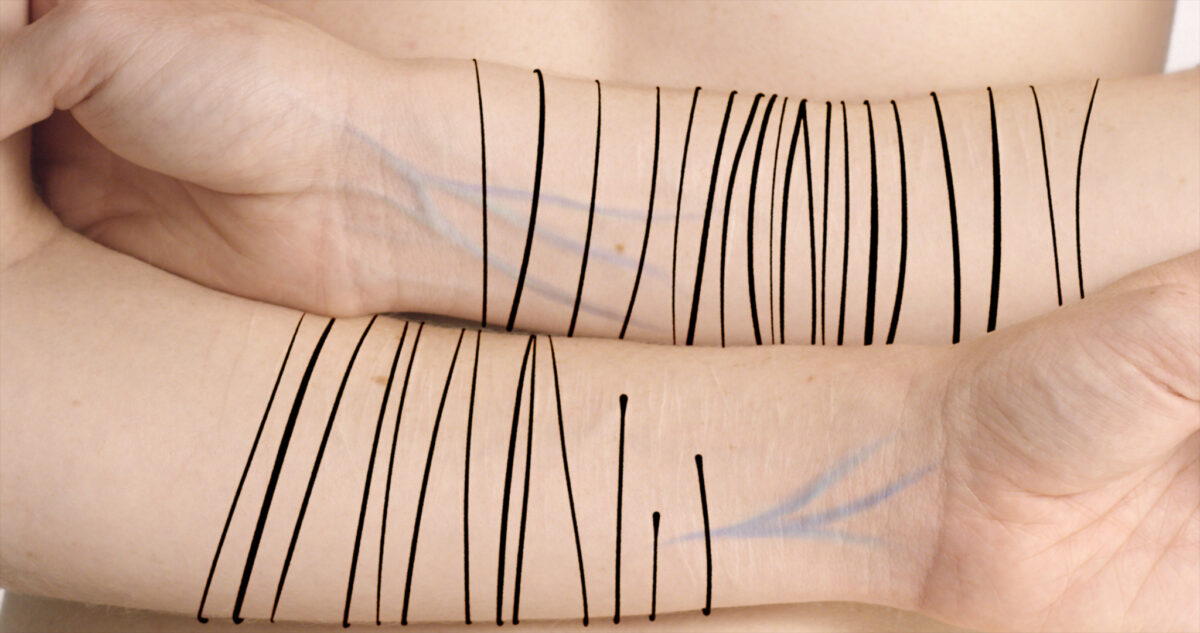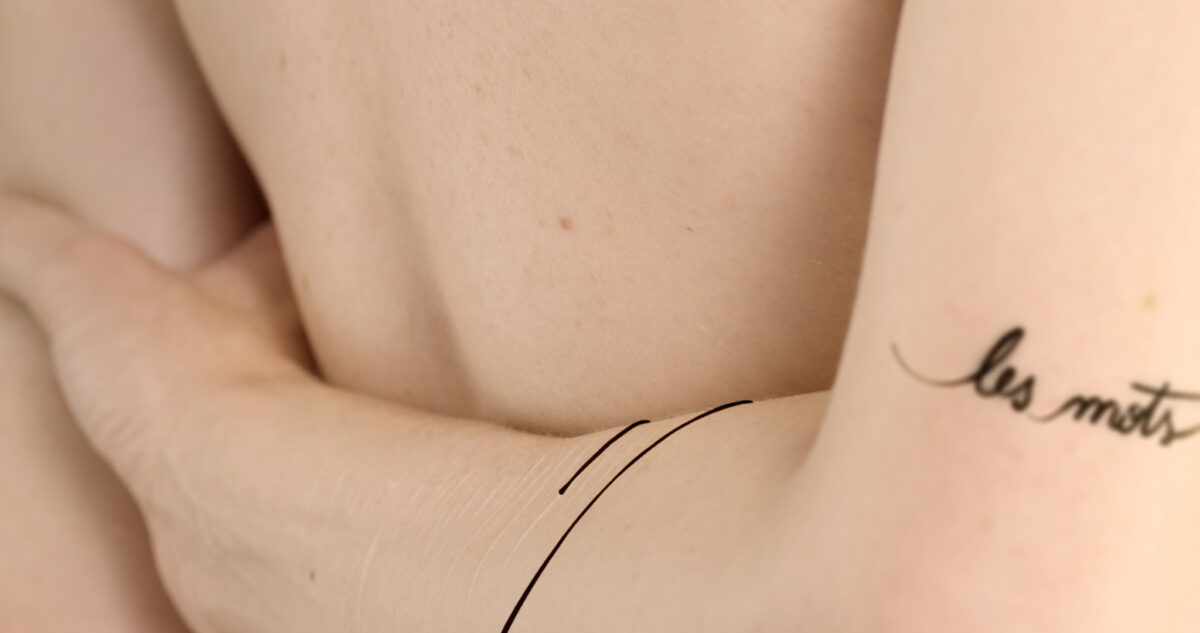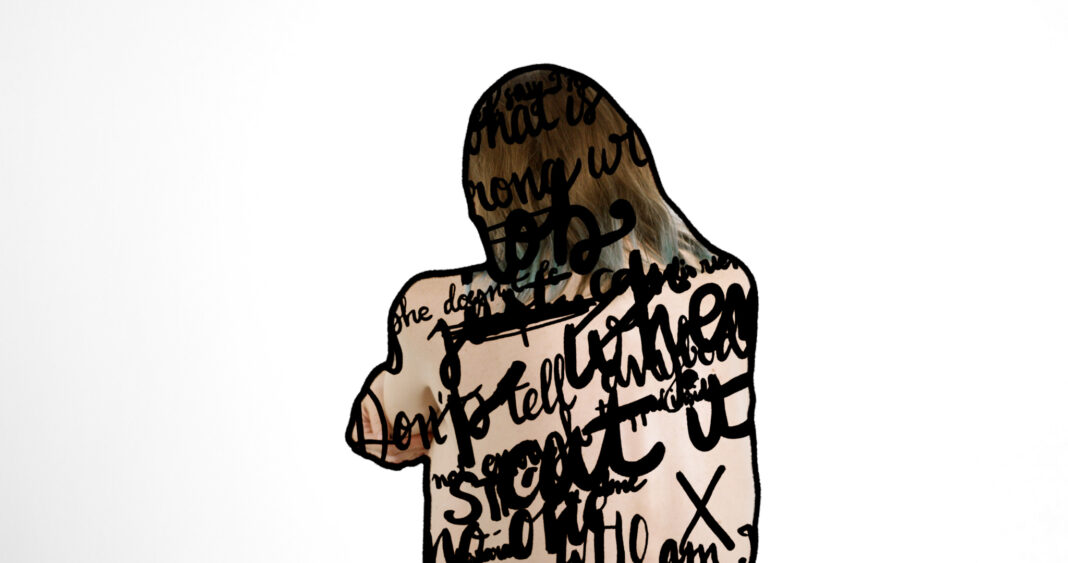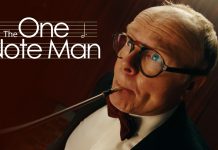Mental health and the ever-remaining effects of it at all ages has been highlighted, thanks in part to the strong efforts of the Duke and Duchess of Cambridge, who have campaigned within charities like Heads Together in all aspects of life.
A new short animated documentary, SCARS, from film-maker Alex Anna, combined with natural nudity, attempts to highlight the issues on both.
Film And TV Now recently interviewed the director, as she talked not only of the film’s subject and impact, but her own personal journey towards the film.
FILM AND TV NOW: Self-harm is such a major issue for people, particularly amongst adolescents who struggle enough to cope with all the elements that we all go through at that particular age. What was the start-off point for the project?
ALEX ANNA: For me, making films and art is about standing up for what you believe in, giving a voice to the silenced topics and trying to make things change.
Self harm is one of these subjects : a lot of people are struggling with it, or have struggled with it, but there’s very little representation of it. it is still a big taboo, amongst other mental health issues. That’s why I’ve been wanting to make a film about it for several years.
FTVN: Did you ever have issues of a similar nature as an adolescent?
AA: Yes, and the film portrays my own experience with self-harming. As an adolescent I suffered from severe depression and I think hurting myself was one way I found to cope with a disturbing world I couldn’t understand nor fit into at that time.
FTVN: Tell us about the subject of the documentary and how you made yourself feel comfortable, given that we see natural nudity on occasion throughout the short?
AA: I think nudity in the Arts has a wonderful power : it takes us back to our core, to what and who we are without any disguise, and it is also an infinite source of beauty we hide all too often.
I have been working with artistic nudity as a photographer and a model since I was 18, and I’ve always been fascinated and inspired by nudity in Ancient Greek & Roman Art – I had a small Venus de Milo replica in my bedroom when I was a child. Therefore using my body and my scars as a canvas has been a natural material for me to work with.
In French we use the expression “se mettre à nu”, which translates to both to “to expose oneself by telling the truth” and “to lay bare”, and that’s what I’m doing in this film – to be honest, it makes me feel just as much vulnerable as it is empowering.

FTVN: One thing that is interesting is that often self-harm is seen as a convenient dramatic tool in storytelling to express a character’s key challenges. Here it is a bit more hard-hitting for effectiveness. Did you do much research into self-harm and its consequences before filming began?
AA: Through my own process overcoming depression and self harming, and also as a psychology enthusiast, I have done a lot of research on this subject. One important thing I understood from all that is that no one experiences it the same way.
That’s why using my own voice rather than depicting self harming through a fictional character felt more accurate : it is my story and mine only – some will relate to it, some won’t. There is no “universal story” of self harm.
FTVN: Has the film been shown to schools and students?
AA: It hasn’t yet but I hope it will. We would have to be careful of course regarding nudity, but also with the fact it can be triggering for people and especially vulnerable adolescents. But I think it is better to open the dialogue about it with them, than to keep it in silence and hide it.
FTVN: Did you have a specific visual concept for the film?
AA: Our concept was really to mix animations and live-action pictures in a way that they respond to each other all the time to create another element of meaning. It has been a long process, working with sketches, doing photographic research around the body and the scars, defining what the style and the “behaviour” of this animation should be…
FTVN: Tell us about your production team.
AA: For this very short film we’ve worked with a small team that has done an amazing job. Considering the intimate topic of the film, it was really important for me to work with artists and technicians that have a great sensibility. I also wanted to work with as many women as possible.
Kelyna N. Lauzier (Producer) from La 115e knew that, and she helped me through the journey of sharing this story with both subtlety and impact. Marilee Goulet (Director of Photography) really grabbed the purity and the beauty I needed to contrast with the raw audio recordings material.
Valérie Tremblay (Editor) has done an amazing job of shaping this long and complicated story into an artistic expression of pain and healing. Victor Novak (Composer) added yet another layer of emotion to the film, to a point where his music almost becomes sound design : his violin notes are filled with both grace and violence.
I’ll come back to Clément Natiez (Animator) later, and that is to name only a few members of this wonderful team.
FTVN: In terms of what you would like to explore and express through films, what have been the most vivid and satisfying experiences you have had over the years?
AA: With my first film (Le Fruit de nos entrailles) I have talked about a political topic through satire and comedy, and with this second film (Scars) I am obviously working on a more emotional and dramatic tone.
Exploring both these very different ways of expression and witnessing their impact on the public has been a very satisfying experience : it teaches me that there are so many ways a voice can be heard.
A very satisfying point during the making of Scars was when the first animated shot was completed : watching this perfect synchronisation between live-picture, animation and music was magical.

FTVN: Is animation something you would prefer to work in for storytelling or live-action?
AA: I think every story has different needs and animation is one of the tools that can be used to tell it. I love the experimental dimension that it brings ; it allows you to go anywhere you want, it brings imaginary ideas to life, there’s no boundaries anymore.
FTVN: Tell us about your working relationship with Clement Natiez.
AA: Clément and I have been working together for years now. Due to their technical nature, creating the animations has been a very long process that lasted months. Clément has been such a great support and source of creativity throughout this period of time : he’s got a wonderful sense of graphic design, and he never hesitated to experiment with new techniques and new directions to get closer to what I had in mind, when not overcoming it to come up with an ever better-looking idea.
FTVN: How has COVID-19 affected your evolution and development as a film-maker?
AA: The quarantine has given me time to think, read and watch films which was really inspiring. But because I spent it in a small cottage with three friends and no private space, it hasn’t been a creative time for me – I need privacy and silence to write and create.
On the bright side, ever since the lockdown has been over and I have gone back to having my own bedroom and me-time, I’ve tried to make the most out of it and have been writing a lot.
FTVN: Finally, what are you most proud of about SCARS?
AA: I’m proud that we’ve achieved it. It’s been a long and tough road, it’s been triggering and confusing at times, and technically challenging ; we’ve worked in Canada and in France, and we made it till the end. I am so proud of every member of this team. We’ve achieved so much together, and I couldn’t have done it if it wasn’t for their talent and their support through doubts and hard times. I am looking forward to the next project already.





























